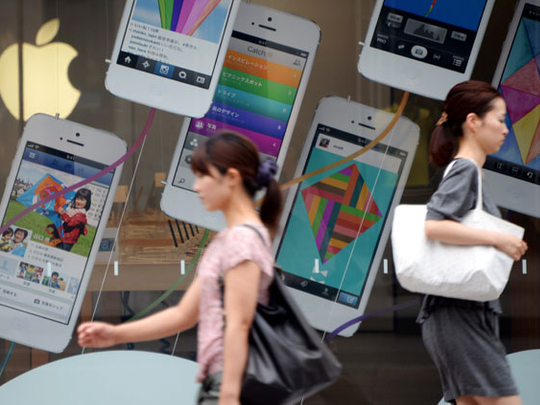
Comcast Corp’s soon-to-launch Peacock service shows that advertising is the future of streaming TV. Consumers may be OK with that.
The cable giant’s NBCUniversal entertainment division showcased Peacock to investors ahead of the app’s soft launch slated for April 15. Like Netflix, Disney+ and HBO Max (and to some extent, the content-lite Apple TV+), Peacock offers a library of movies; older and current network TV shows, such as ‘The Office’ and ‘This Is Us’.
And original programming made exclusively for its streaming audience. But it differs from the other services in one significant way: Peacock’s primary source of revenue will be ads, not subscriptions, allowing viewers the option of streaming for free.
They all add up
Let’s face it, paying for individual streaming-video apps at $7 (Dh25.7), $13 and $15 a pop isn’t all that cord-cutting was cracked up to be. The streaming-TV subscription model is brand new and broken. One app isn’t enough, yet having multiple subscriptions can get so expensive customers are left to wonder why they even got rid of cable.
The streaming wars haven’t been a delight for the entertainment giants and their shareholders, either: These new apps are extremely costly to build and to stock with content, and they’ll cannibalise the larger revenue streams generated by traditional TV networks.
Put it this way: TV just seems to work better for everyone when the consumer is the product, able to be sized up by advertisers desperate for a few moments of our time in hopes of activating a shopping reflex.
Mind the subscription fee
Anecdotally, it’s said that viewers can’t stand ads. But in fact, research has shown that the No. 1 gripe for video subscribers is how much they’re paying. In a survey of about 6,000 North Americans conducted for TiVo Corp. toward the end of last year, about 70 per cent said their reason for cutting the cord was that pay TV was too expensive.
A separate survey by Ampere Analysis Ltd. similarly found price to be by far the biggest motivator for consumers switching to ad-supported apps, and 39 per cent said they don’t mind seeing ads while they watch. Peacock is promising just five minutes of ads per hour.
For $10 a month, Peacock can be ad-free. But Comcast is probably hoping everyone will opt for the ads. About 70 per cent of Hulu’s subscribers are on its ad-supported version, Peter Naylor, who heads up advertising sales for Hulu, said at a conference last year.
Hulu makes more money from its ad-supported version than from its ad-free subscriptions.
Comcast predicts Peacock will have at least 30 million active accounts and $2.5 billion of revenue by 2024, and that Ebitda will break even by then. Walt Disney Co. estimates Disney+ will turn profitable that same year, but it will take at least twice as many subscribers paying about $7 a month to do so.
Similarly, AT&T Inc. is forecasting HBO Max won’t start making money until 2025, even though its fee is $15 a month. Meanwhile, Netflix has insisted it won’t adopt ads, despite the company’s $19 billion of content obligations as it burns through billions of dollars of cash each year.
Of course, if ads are the name of the game, the industry has work to do to make them less annoying. Hulu, which is controlled by Disney, has been on the forefront of trying new advertising methods that are less interruptive than traditional commercials. It rolled out “pause ads” last year, which promote a brand’s product on screen while a video is paused.
Comcast may be the only media giant to fully embrace ads so far for its streaming debut, but others will probably transition to a model more like Peacock’s over time. After all, birds of a feather flock together.












